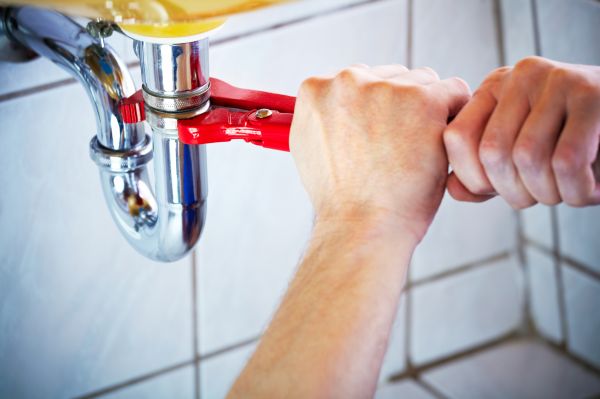It might look daunting at first, but not everything going on in your pipes needs an expert touch. Save yourself a significant amount of money on these easy plumbing tasks anybody can do.
Repair a Dripping Faucet
What many homeowners don’t realize is that finding the parts is really the hardest part of this repair process—and that’s not too difficult when you can just bring in the old parts to the store for expert identification. The disassembly varies depending on the type of faucet you have: rotary ball, cartridge or ceramic.
Rotary ball faucets have handles that appear to be on a swivel, allowing fluid movement. Cartridges are a bit more cylindrical and don’t operate on a swivel. Ceramic looks more like a rotary ball but functions more like a cartridge—think about the faucets you might see at an airport.
In all cases, the cause of dripping remains the same: corrosion. Whether it’s the aptly-named O-ring or even a standard washer, having even moderate wear on these parts disrupts its tight installation. When the parts aren’t tight, there are holes where water can continue falling out of turn, though not nearly at the same rate as if the faucet were on. Using an Allen wrench, you can remove the corroded part and reassemble the components as they were undone to complete the repair.

Unclogging the Toilet
What could be more inconvenient than a clogged toilet? It can’t be flushed without the risk of overflowing, and that’s an entirely separate problem you won’t want to experience. Before attempting anything else, grab the plunger and give that a try first.
Be sure to use a plunger that has more of a bell shape since these are specifically designed for toilet use, and never thrust hard for your first push; after all, your first push will force water to splash back as the air inside the plunger expels into the toilet.
Failing this, a plumbing snake can reach farther along the pipes than the size of your hand and the flexibility of your bones could ever allow.
Stop the Running Toilet
Another common problem you might face is a running toilet. This one requires diving into the tank, rather than the bowl, where you’ll find a rudimentary setup that handles flushing the bowl and refilling itself with fresh water. The clear fill tube, which connects the two structures, may need to be pushed further into its connections as they may be loose.
Another option is to check the black float. Pinching the clip on its side, you can adjust the height to test flushing. If it’s too low, flushes will be weak; if it’s too high, it won’t ever shut off. In the event that changing the float has no effect on the state of the toilet, you likely have a defective part; however, most hardware stores offer replacement parts, and swapping the two takes less time than a favorite television show.
Lastly, the flapper could be the culprit in a running toilet scenario. This is the ground-level piece of rubber connected to the tall overflow tube by a chain. Of these repair steps, this is the simplest; all you need to do is get a replacement and drop it into place. Be sure to purchase a “universal” flapper as an extra to have on-hand for future maintenance.
Charlie Teschner started MESA Plumbing, Heating, and Cooling in 1982. Charlie has a journeyman and master plumber’s license. He was raised with a strong work ethic and he now applies those values to tasks such as Boulder plumbing repair.
